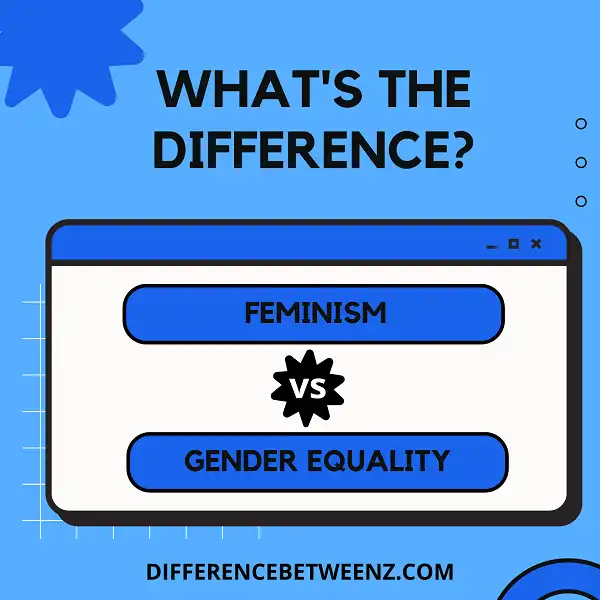With the rise of movements such as #MeToo and everyday activism, conversations about feminism and gender equality have been gaining momentum. This is an important ongoing debate that affects everyone in our society — not just women, but people of all genders. It’s crucial to understand the key differences between feminism and gender equality before we can take meaningful action towards achieving it. In this blog post, I will be exploring the distinct meanings associated with these two concepts while shedding light on how they intersect in an ever-changing world.
What is Feminism?
Feminism is a term used to describe an ever-evolving way of thinking that works to break down oppressive systems and promote equality for women and other minority groups. Feminism is about more than just wearing the t-shirt and saying the buzzwords – it’s a way of thinking that tries to challenge the status quo by shifting power dynamics between men and women, encouraging both genders to confront gender expectations, sexism, toxic masculinity, and other traditions that seek to privilege one group over another.
Feminism encourages cultural change through policies and initiatives aimed at creating a safer environment for everyone, regardless of sex or gender. Feminism also works to value personal expression in all forms, promoting empathy and understanding while embracing diversity in all its shapes and forms – ultimately contributing towards developing a more inclusive world.
What is Gender Equality?
Gender Equality is a concept that is gaining more and more traction in today’s world. Gender Equality is the belief that men and women should have the same rights, opportunities, and freedoms—regardless of their gender identity or expression.
- Gender Equality goes beyond simply treating people equally; it means taking deliberate steps to ensure that all genders are represented fairly across societies and cultural norms.
- Gender Equality also encourages everyone to challenge traditional stereotypes of masculinities and femininities, allowing all genders to be accepted without discrimination.
- Gender Equality promotes equal access to education, healthcare, employment, legal rights, and other social services—effectively removing the barriers which prevent individuals from succeeding no matter what gender they are.
Gender Equality looks different for every situation but ultimately works toward creating an equitable society where everyone has access to basic rights and resources.
Difference between Feminism and Gender Equality
Feminism and Gender Equality are often confused for being one and the same, but in reality, there is a big difference between them.
- Feminism is defined to mean that men and women should have social, political, and economic equality.
- Feminists believe that men and women should also have equal rights in terms of opportunities such as career advancement, education, economic success, and leadership roles.
- On the other hand, Gender Equality goes beyond traditional Feminism ideals to include equity across all genders including cultural identification, gender identity expression, respect for diverse sexual orientations,s and socio-economic statues.
All individuals should be afforded basic human rights regardless of their gender status. Feminism may be essential to achieving social equality between sexes but Gender Equality is necessary to achieve equanimity across all genders within society.
Conclusion
We hope this blog post helped clear up any confusion about the differences between feminism and gender equality. It’s important to understand these concepts so that we can move forward in achieving full equality for all people, regardless of gender. We need Feminism and Gender Equality to work together to make this world a better place for everyone.


